After exploring eastern Taiwan, we headed south to the city of Kaohsiung (高雄). The second most populous city in Taiwan after Taipei, Kaohsiung has historically been an industrial city with the most important port in the country. In recent years, however, a lot of city beautification projects have been proposed and implemented by the government in order to make Kaohsiung more attractive for tourism.
Getting around in Kaohsiung was pretty easy. Being a big city, it has a convenient and inexpensive metro system that connects the main attractions in the city.
Lotus Pond (莲池潭)
The Lotus Pond is a man-made lake home to a few Buddhist and Taoist temples, as well as pagodas worth visiting. What makes it unique is that the temples and pagodas are built on the water, creating a very interesting place for praying and worshiping divinities. We visited the following two:
Spring & Autumn Pavilions (春秋阁)
The entrance to these pavilions is through the mouth of a dragon statue.
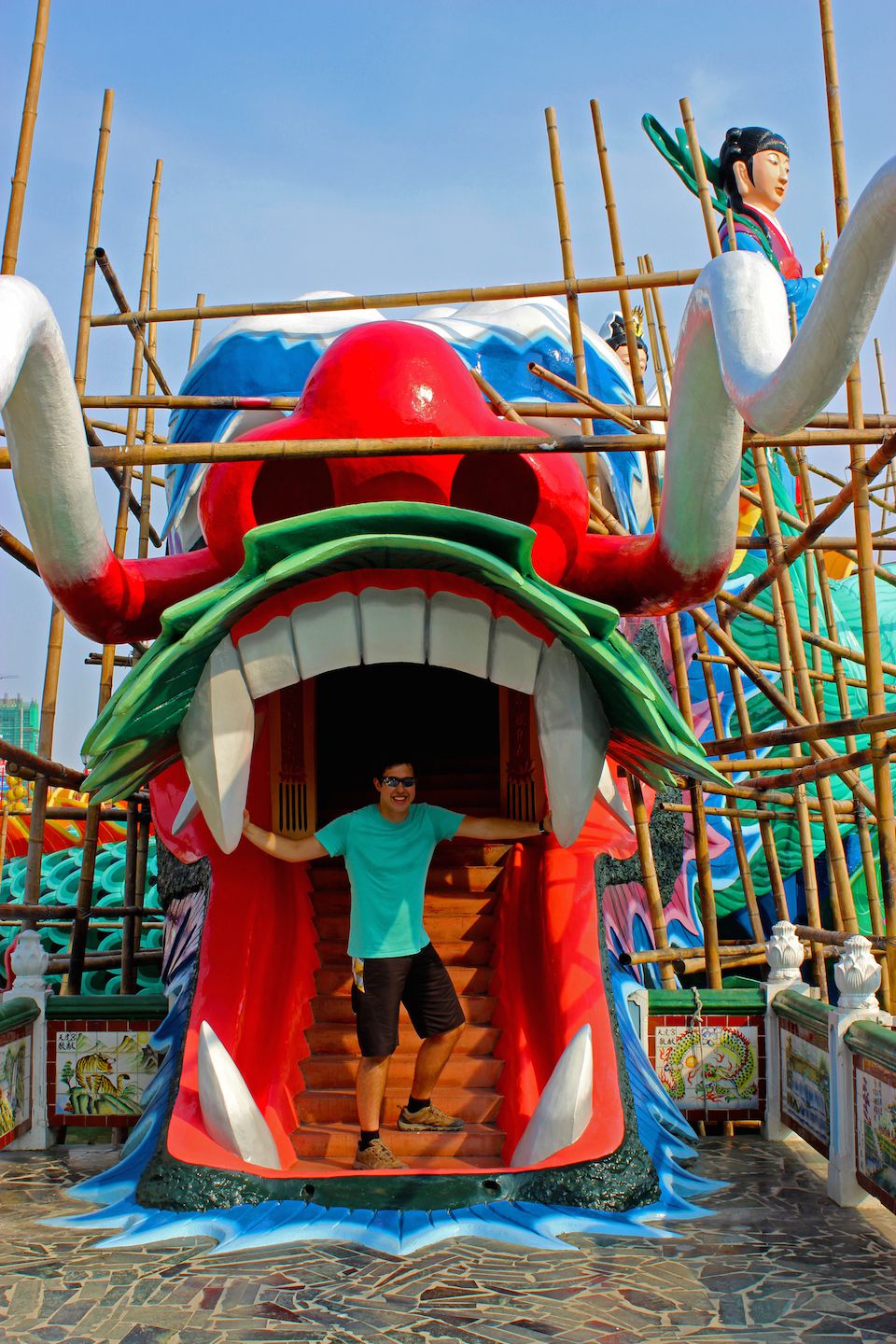
In my opinion (and apparently for other tourist too), walking through the dragon to get to the pavilions was more exciting than the two pavilions themselves.
Dragon & Tiger Pagoda (龙虎塔)
The entrance to the pagodas is also very interesting. To get in and out, one must enter the dragon’s mouth and exit through the tiger’s mouth, symbolizing turning bad luck into good fortune.
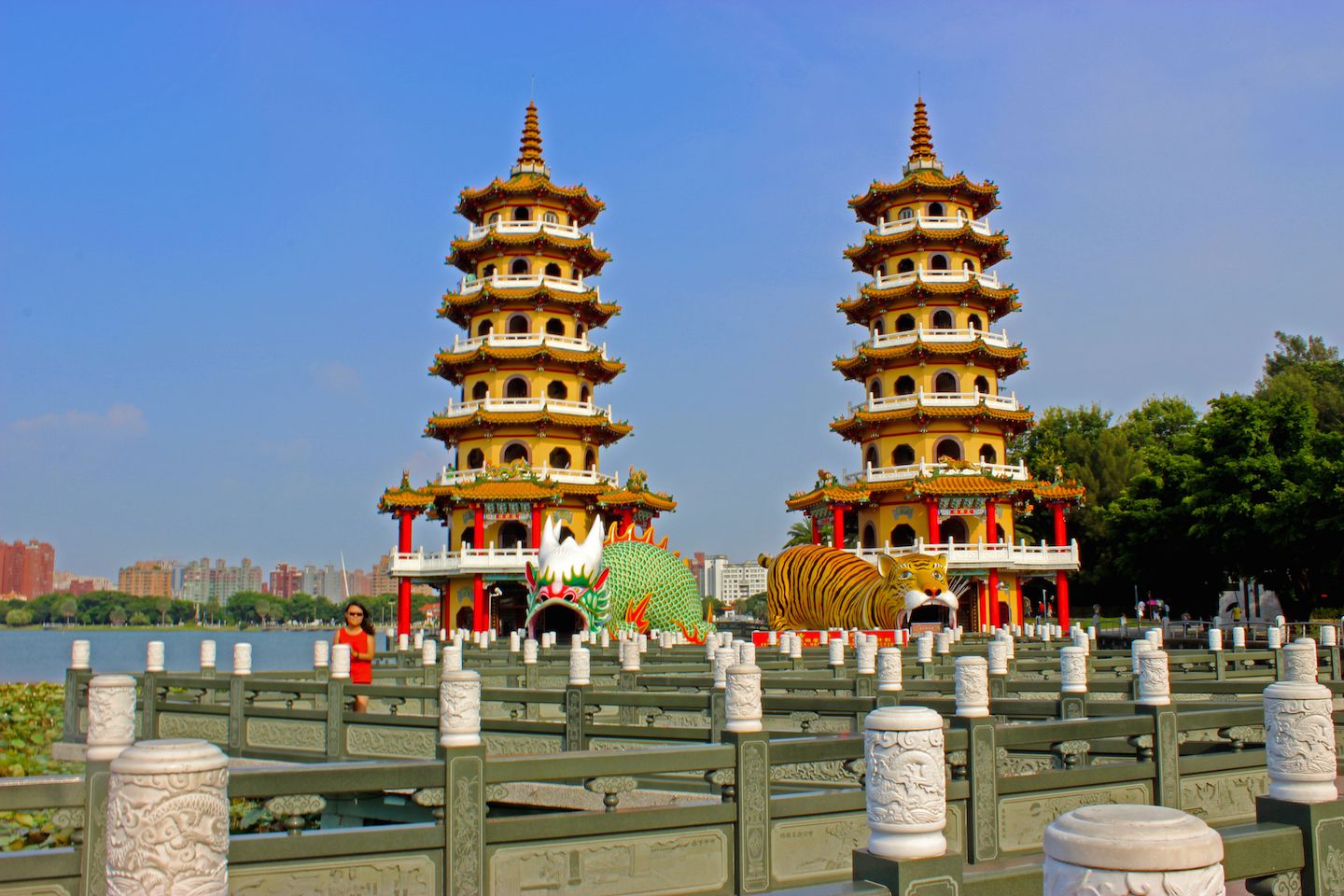
The pagodas have 7 stories, each with several paintings representing life in heaven and hell to inspire people to do good and show retribution for those who don’t. On the top floor, we could see the entire pond and all the temples built on the water.
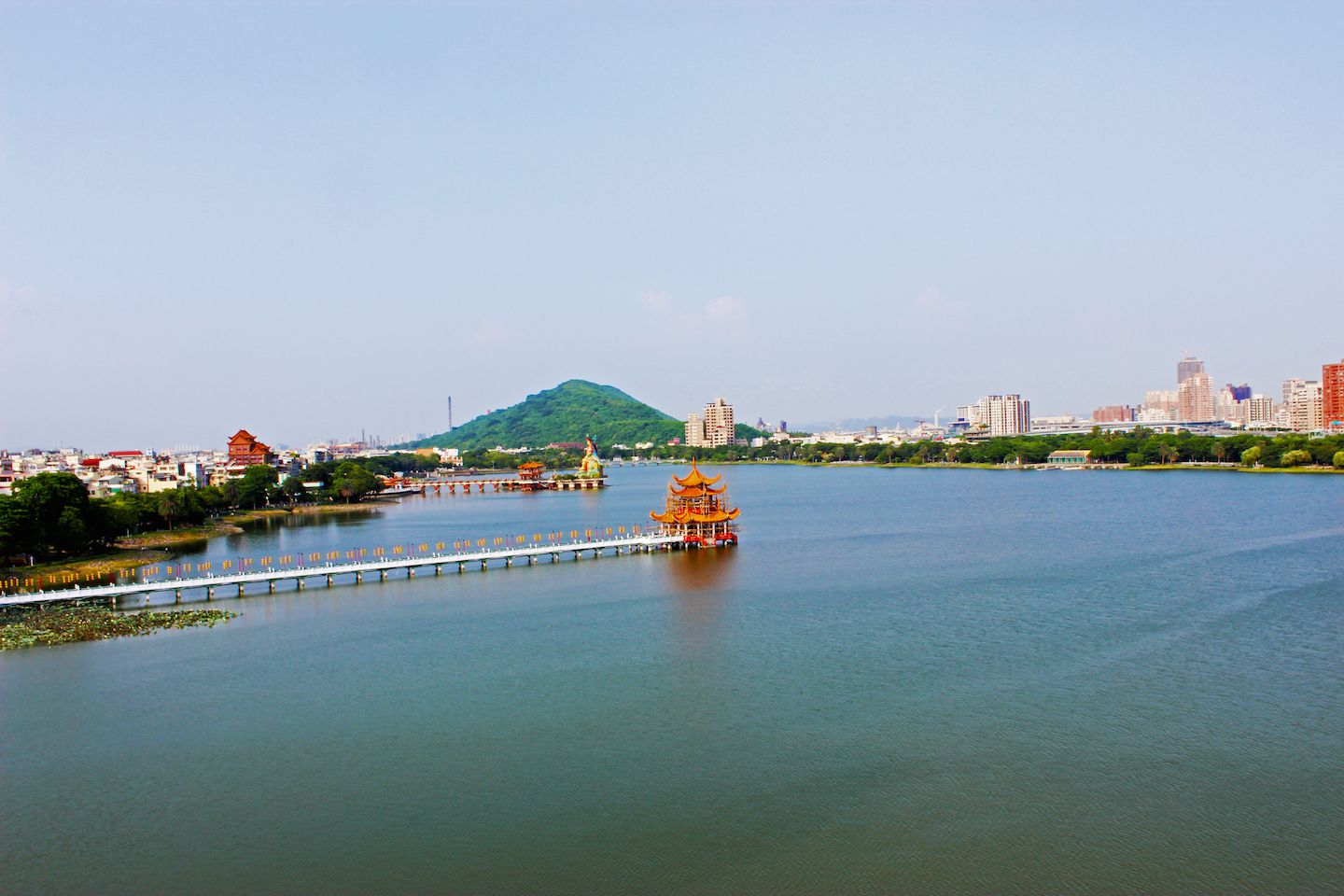
Cijin (旗津)
Cijin is a very long and narrow island just a few hundred meters away from the Kaohsiung coast. The natural port formed between Cijin and mainland was a key factor for Kaohsiung’s industrial development in the early days. Nowadays, Cijin is known for its street markets and serves as a major weekend getaway for locals. A 2-minute ferry ride from Sizihwan (TWD 15 or USD 0.5) takes you across the harbour onto the island. The ride itself is very scenic with sights of the entire harbour, the Kaohsiung’s coastline and Cijin’s lighthouse.
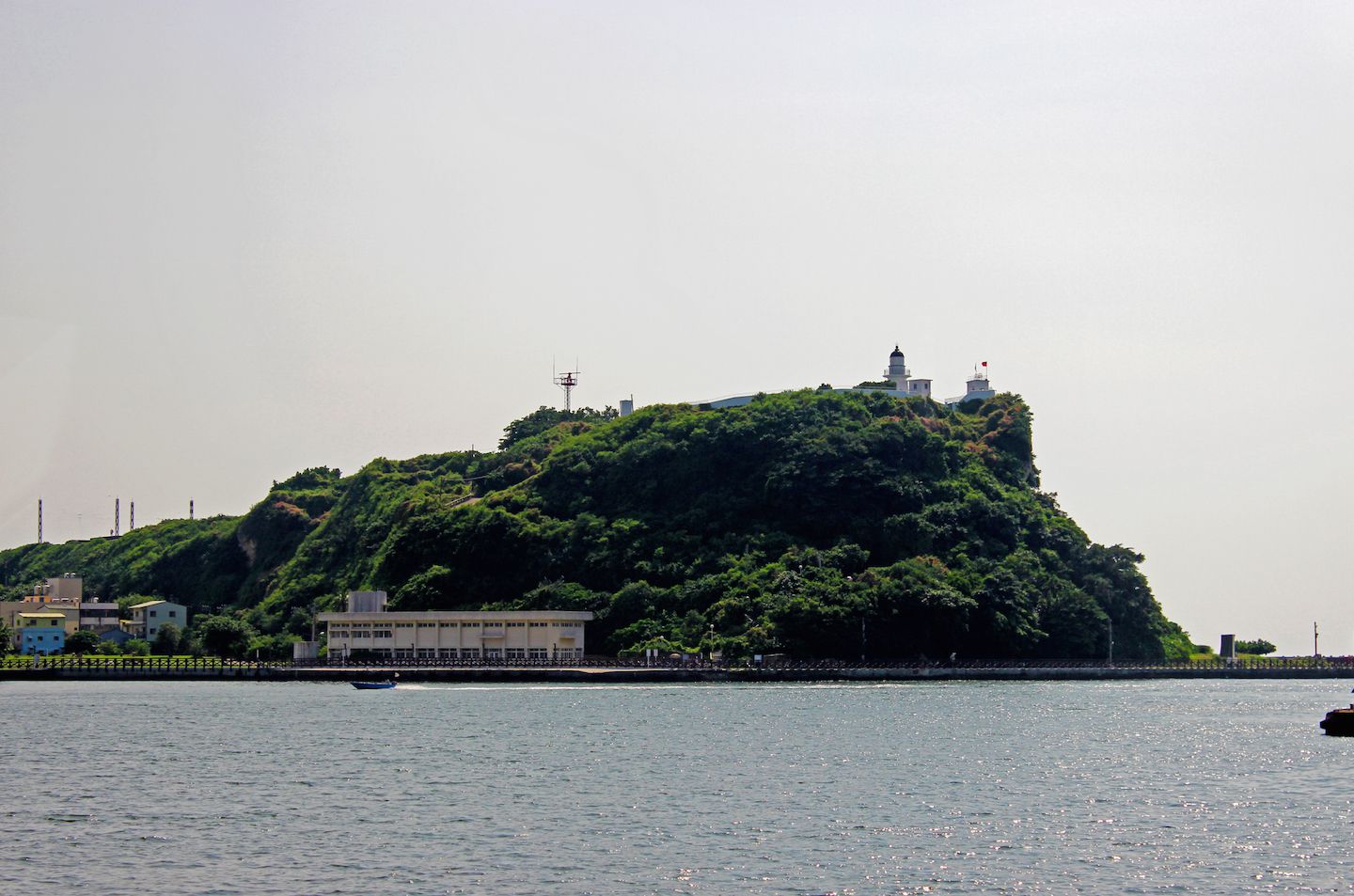
Arriving at the island, we found ourselves in the middle of a street market, with stalls selling food, clothing items and everything under the sun. We, however, took a detour to go see the lighthouse, stopping along the way to cool down inside the stores with AC. The way uphill was hard, not because the roads were bad or steep, but because it was unbearably hot, humid and sunny that day. Even for me, coming from Brazil, it was quite uncomfortable. Julie was dying in the heat. Thankfully, we made it to the top fast enough.
The lighthouse itself was pretty boring with not much to see; however, from the top of the hill, we had a panoramic view of Kaohsiung’s port and Cijin beach.
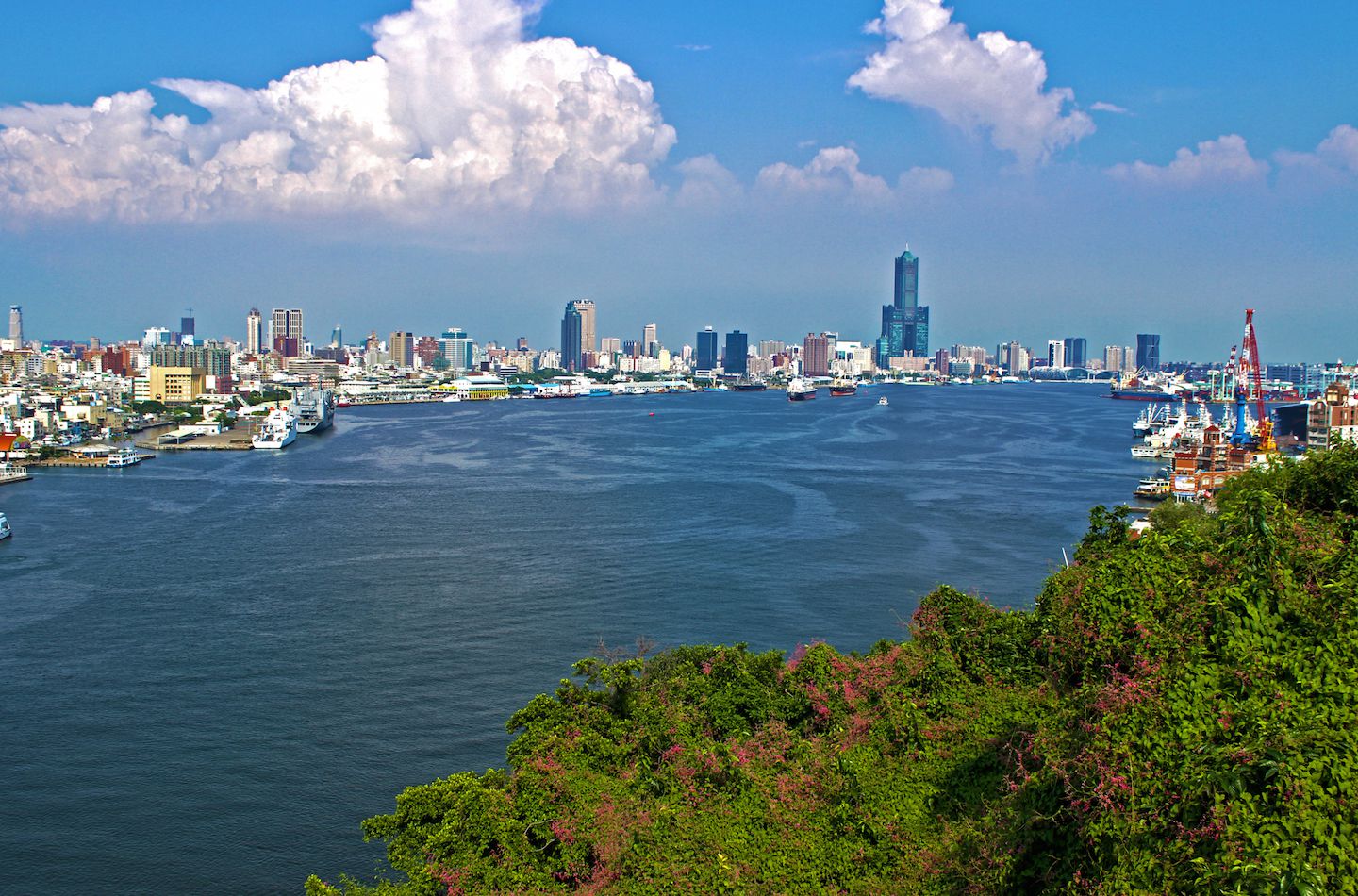
On the way down, the view of the beach and the shipwreck were pretty inviting and it wasn’t long before we reached the sand. The cool breeze coming from the sea was all we needed at that moment and we sat under the shade for a while, just staring at the ocean.

By the end of the day, we made our way back to Sizihwan and to the former British Consulate. The sunset viewed from there is considered one of the most beautiful in Taiwan and we couldn’t miss it. By the time we arrived at the former Biritsh Consulate, it was already packed with tour groups and other tourists, but we were lucky enough to find some seats to appreciate what was to come. Similar to the sunset in Tamsui, the sunset in Kaohsiung was on the sea with the harbour in the foreground.
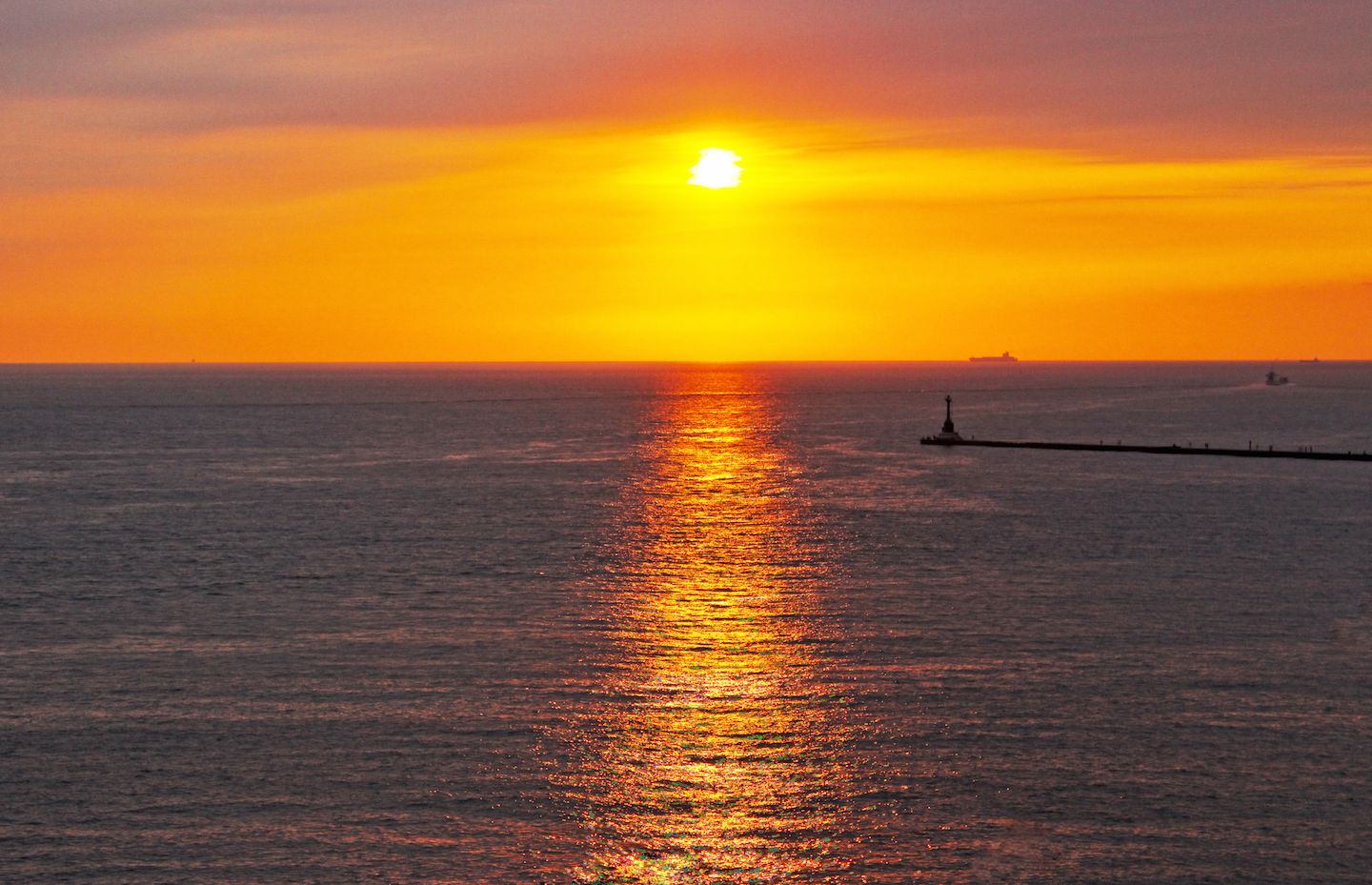
All in all, Kaohsiung surprised me for offering more than expected, combining a modern city with beaches and history.
—
For more pictures from Kaohsiung, visit the gallery!

